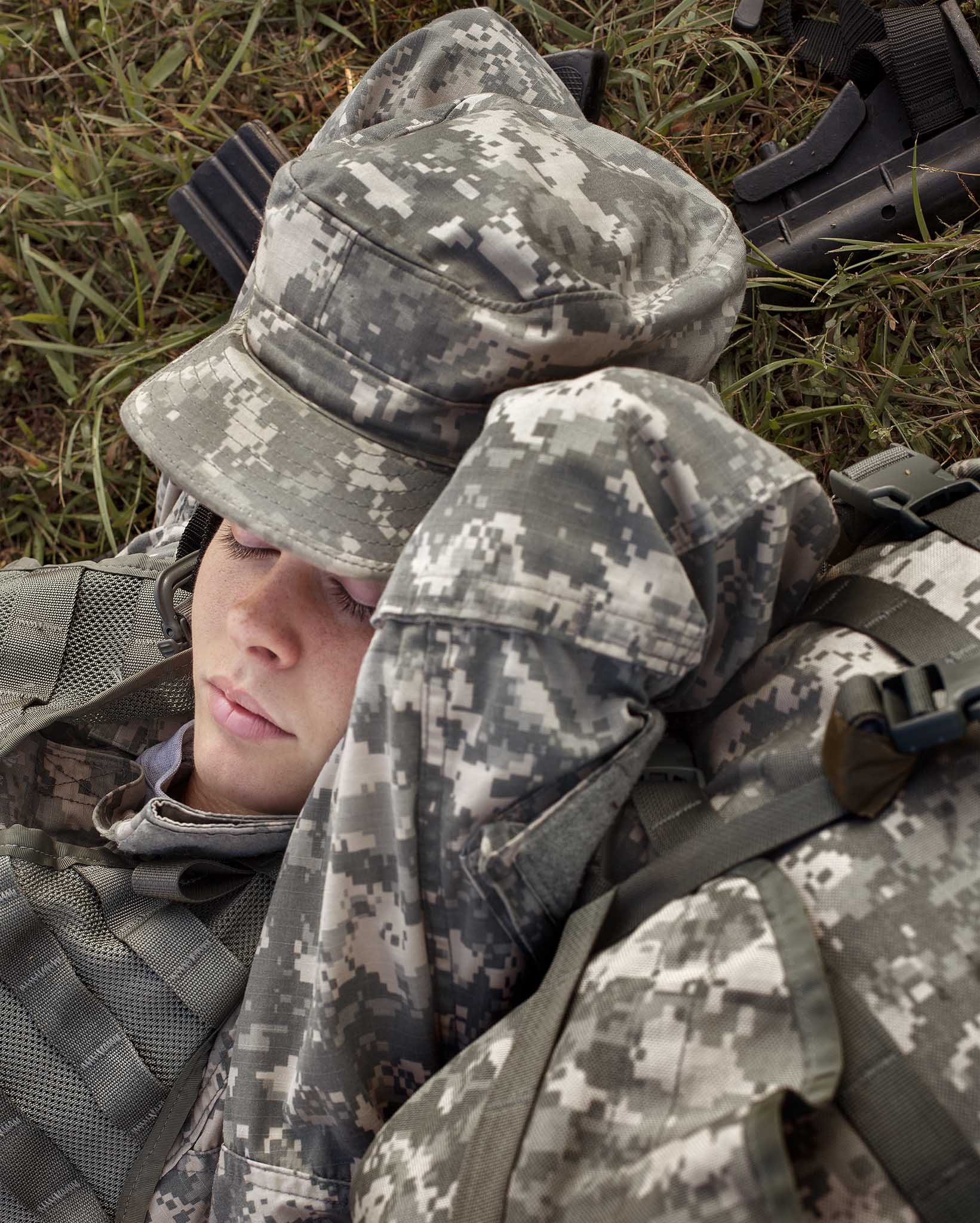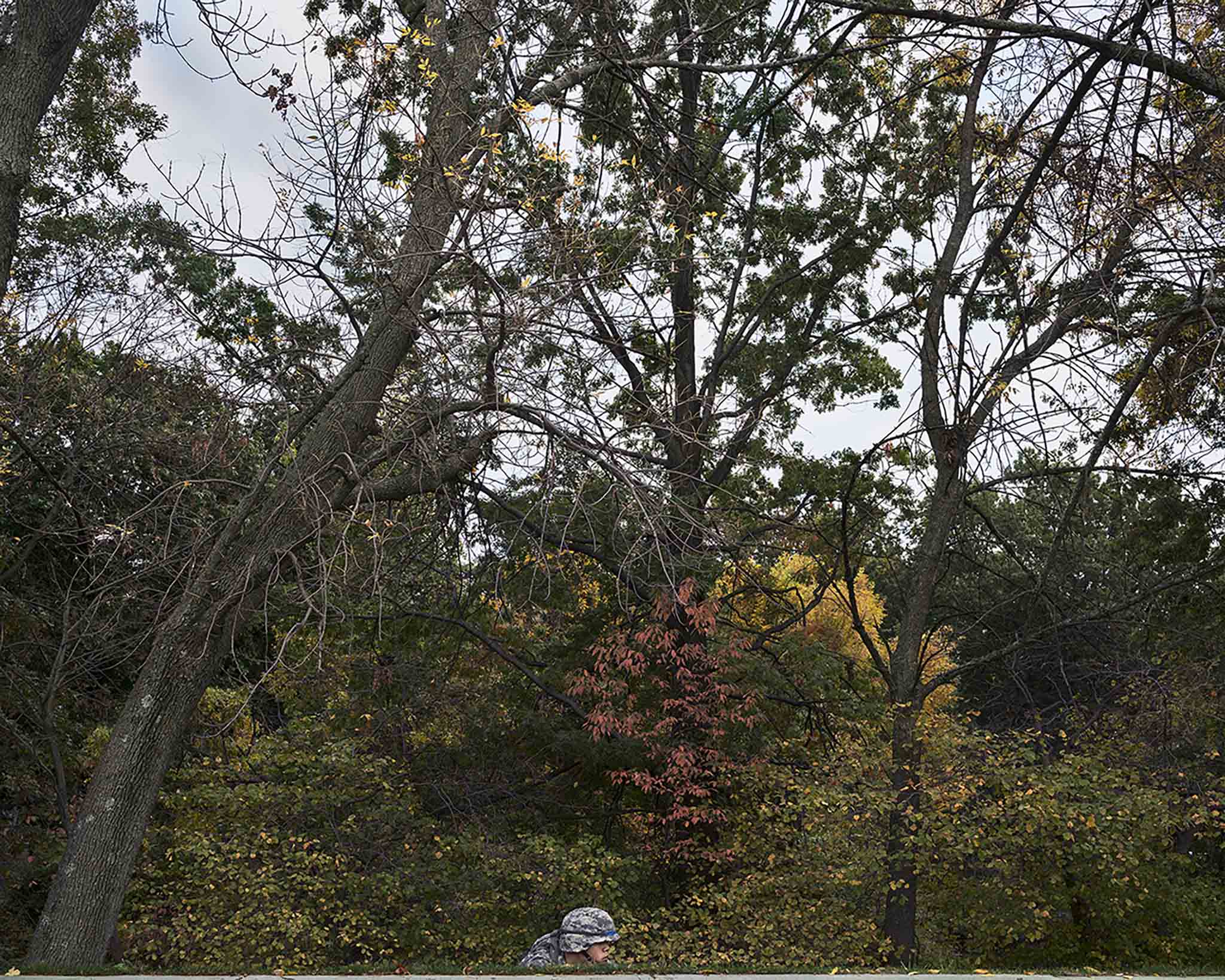Q&A: Alejandra Carles-Tolra
By Rafael Soldi | Published February 25, 2016
Alejandra Carles-Tolra is a Spanish photographer from Barcelona currently living in London. Her work examines the relationship between individual and group identity, and how the latter shapes the former. Questions regarding what defines it, the role surroundings play and the threshold between individual and group identity drive and inform her work as an artist.
Her work has been published and exhibited internationally, most recently at CNN, The Huffington Post, Gup Magazine, World Photography Organization, Cosmopolitan, Flash Forward Festival, and Valid Foto BCN Gallery. She was a finalist for the 2016 Outwin Boochever Portrait Competition at the Smithsonian's National Portrait Gallery, and has received several awards and mentions such as 21 New & Emerging Photographers by Lens Culture, Descubrimientos PhotoEspaña 2013, was a winner of the Biennial D'Art Jove at the Fine Arts Academy of Sabadell in Barcelona and was nominated for 2015 The New York Times Portfolio Review. She has taught photography at The University of New Hampshire, Massachusetts College of Art and Design, and Camera Eye Workshops, among other institutions and she is currently collaborating with non profit organizations in London.
Rafael Soldi: Throughout our recent conversation you repeatedly brought up the idea of theatre in relation to your work. What is your relationship to theatre and how does it influence the subjects that you choose to explore?
Alejandra Carles-Tolra: I have always been fascinated with understanding how identities are created and shaped by our surroundings. Growing up I spent many hours taking theatre classes, and for a while that was my way of exploring different personalities, understanding the creation of identities, and the performance of roles. When an actor or actress performs a role according to a script our perception of their individual identity is shaped through their performance, as they become their character. Similarly, I am interested in exploring and questioning how we perceive people based on the roles they play and the groups they are part of. In addition, I am visually drawn to theatre’s dramatic lighting, which enhances the performer's’ gestures, and I attempt to bring that into my work.
RS: You began your career as a Sociology major and fell into photography by chance.
How is this reflected in your work?
ACT: My fascination for understanding the constructions of identities took me from theatre to sociology, and eventually to photography. While studying sociology I felt the need to use a more universal language that would allow me to get closer to my subjects and reach a broader audience. Photography became the perfect medium for me to continue exploring and expressing those interests. Questions regarding what defines our identities, the role surroundings and groups we’re part of play, and the threshold between individual and group identity still drive and inform my work.
When beginning a new project I am usually interested in exploring a group that I am unfamiliar with. I am eager to learn more about individuals that are commonly labeled under a stereotype. I try to determine how these labels are constructed, and strive to obtain a better understanding of who they are. I usually begin this process by spending time doing research on their history, shared passions, beliefs and practice.
The Bears, installation view
RS: Both Fall In and The Bears explore the role of women in male-dominated fields. What are these projects about and what attracts you to it? Is it important to you to continue to investigate female identity?
ACT: Both projects are about how our perception of an individual’s identity is influenced by the groups they’re part of. I am interested in exploring both male and female identity, however I became aware of the experiences women who perform in a male-dominated field go through while photographing ROTC cadets for my series Fall In. This made me very interested in capturing other women with emergent identities who were also part of a group in a predominantly male field. The Bears portrays women who are part of Brown University's rugby team.
Through these two bodies of work, I aim to bring a broader understanding of female identity. I believe these women play an important role in pushing the boundaries of what it means to be a woman.I hope my photographs challenge preconceived ideas about the construction of female identity, while celebrating the perseverance and strength of these women.
RS: There is a typological element in your work, most evident in Trapped. And even in a more abstract way, you could say that your latest projects are typological in that they look at women in the context of very specific performative spaces. Have you ever thought of your work in this way? Are there any artists that may have influenced the way you work?
ACT: Actually, I had never thought about typological elements in my work in a conceptual way. Visually, there are a couple of series in which I do directly enhance the influence of Bernd and Hilla Becher, August Sander and Thomas Struth’s work that first inspired me when I was back in university. I believe this is particularly evident in my series Trapped, and in my most recent series Saving Face. The latter is a collection of portraits taken in the streets of Vietnam that aims to comment on the environmental, beauty and class concerns that are arising in Vietnam’s changing consciousness.
© Alejandra Carles-Tolra, Saving Face
RS: As someone who has also worked heavily in portraiture before I've ran into some challenges. Portraiture doesn't appeal to many people, it's hard for galleries to sell, and in many parts of the word it is largely ignored as a photographic subject. Have you encountered some of these challenges as well? Do you find that it's harder for portraits to find a home, and that it is also contingent on the subject of the portrait?
ACT: When it comes to selling work, I agree with you about the challenges that portraiture faces. Several times I’ve had people approach me to tell me that they would love to buy my work, but find it hard to find a place in their home to display the portrait of a “military cadet”, a “rugby girl” or just a random stranger. I do think it appeals to many people though, portraiture creates an immediate connection with another person (the sitter) and good portraits establish a relationship between the viewer and the subject, or at the very least spikes some kind of emotion; like or dislike, trust or distrust, empathy or rejection.
RS: What have you learned about yourself through the exploration of these communities that were unknown to you? Did working on Fall In and The Bears challenge your preconceived notions of each group?
ACT: When I start a project, I usually know very little about my subject’s values, practices, and what brings them all together as a group. We all have preconceived ideas of who we think these people are based on influences we constantly receive from various sources. I am interested in challenging those simplistic stereotypes and in getting a better understanding of who these people are. Is there a type of woman who plays rugby? Do most young cadets share similar political views? What drives someone to dress up as if they were in the 19th Century?
In my work portraiture plays a very important role. Taking portraits brings me face to face with the subjects that I am interested in learning more about. To me the photographic portrait is a very collaborative and intimate process, and through it I am brought to interact with my subjects. Portraiture forces me to have to constantly explain my work to my sitters, my purposes and interests, and in doing so I am forced to discover and re-examine my own work throughout the process. This creates a cyclic environment, on the one hand my vision drives my work, however the process of making the work changes my vision.
Fall In, installation view
RS: What's next for you?
ACT: After spending several years in the US I recently moved to London to start working on a new body of work. This time I am focusing on individuals—mostly women—who are very passionate about Jane Austen’s work and her time period. These “Janeites” have found a community in which they can celebrate her work, dress up in Regency period clothing and keep Austen’s words alive.
In March, I’m very excited to be traveling to Paris to view The Bears on display at an exhibition as part of the Circulations Festival, which will be on view at Le Centquatre in Paris until June, along with several outdoor exhibitions.
© Alejandra Carles-Tolra, The Bears (Above)
© Alejandra Carles-Tolra, Fall In (Above)















